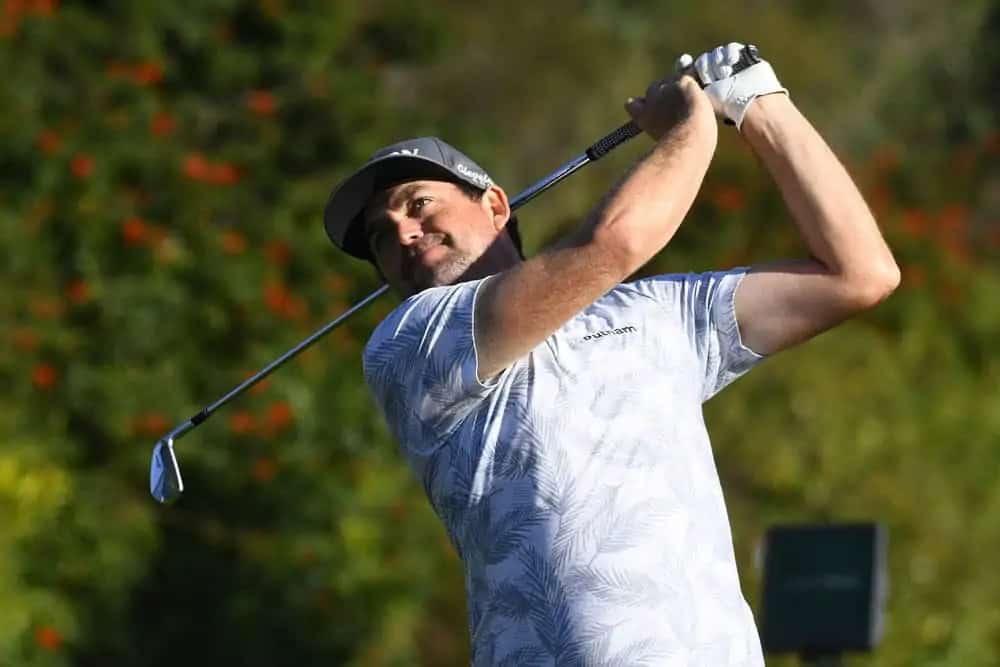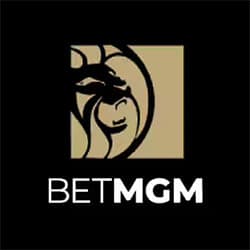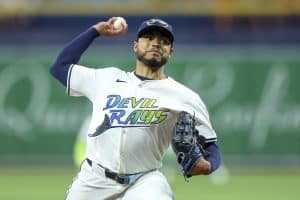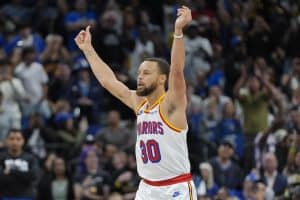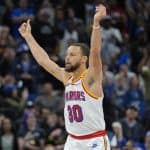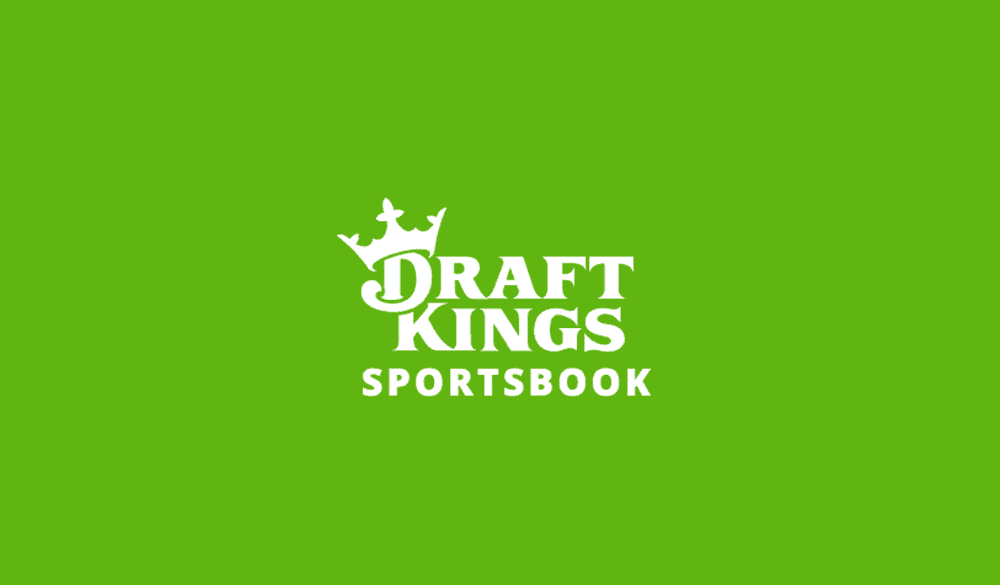For as many majors as Jack Nicklaus and Tiger Woods have cleaned up over the last, I don’t know, 50 years, the variability of the game of golf means there is a lot of opportunity for longshots to win majors. The Masters has had its fair share of longshots winners, but Augusta is the gold standard of golf excellence — the PGA Championship, with a rotating cast of host courses, is much more wide open year in and year out. With that in mind, here we will break down the biggest longshots to win the PGA Championship of all-time.
Biggest Longshots to Win the PGA Championship Since 1990
Let’s give a quick shoutout to our two honorable mentions who tie for fifth place, Jason Dufner (2013) and Martin Kaymer (2010). Both were +4000 at tournament start, and while Dufner got down to +300 ahead of Round 4, Kaymer was still +2500 after the third round thanks to Nick Watney building a four-shot lead over him. Kaymer went 2 under on the final day, while Watney crashed out of the top 10 thanks to a final-round +9.
But +4000 pre-tournament is not enough of a longshot to get their own slots, so let’s get to the real entries.
4. David Toms (+7000, 2001)
David Toms is the quintessential golfer who just kind of hung around near the top of the leaderboards, won a couple of tournaments and made a good amount of money but never had huge sway. His lone major win, however, gave him forever bragging rights.
The favorite for the 2001 tournament was +300, which honestly seems a little long given who it was and what he was doing at the time.
You could probably guess that it was 25-year-old Tiger Woods, who had won the previous four majors consecutively and five of the last eight — including the two previous PGA Championships.
But every god has a mediocre weekend now and then, and the 2001 PGA Championship was Tiger’s. He finished 29th at -1, 14 back of Toms.
Toms, meanwhile, was pretty much flawless bell to bell. He went 4 under on Day 1 to tie for second, grabbed a share of the lead with a 5-under Round 2, went 5 under again to take the lead solo and closed with a 1-under final round to win by one stroke over Phil Mickelson. It took a clutch putt and third-round ace, but there was no denying who the best player was that weekend.
2 (Tie). Y.E. Yang (+12500, 2009)
Fun fact, Woods was the favorite at most majors during the 2000s if he was playing. What’s interesting is that the 2009 running of the PGA Championship had him +175 to win, which is shorter than the +300 he was in 2001, and he wasn’t on the same crazy winning streak, major-wise.
Granted, he had been cleaning up in the non-major tournaments heading into the PGA Championship, winning two of the three tournaments leading up and five total that year. Bottom line, he was the clear No. 1 player in the world and was treated as such by the odds board.

And after 54 holes, Tiger was in the lead — historically an indicator that he was going to hoist the trophy after the final round. Accordingly, he was -455 to win the PGA Championship entering the fourth round. Yang — whom we have not talked about at all yet — was two strokes back in a tie with Padraig Harrington for second. Yang at that point was +1600 and Harrington +500, further evidence that three-round-lead Tiger was a freaking lock.
But guess what — Tiger shot 75 in Round 4. It happens. Yang went 2 under and Harrington imploded with a 78, so Yang ended up winning comfortably by three strokes. Let this be a reminder to take these single-round bets. Forget Yang +12500 pre-tournament; Yang was +15000 after two rounds and +1600 after three despite being in SECOND PLACE. Value bets, man.
2 (Tie). Jimmy Walker (+12500, 2016)
Finally we remove ourselves from Tiger talk.
Instead the pre-tournament favorites were Dustin Johnson, Jason Day and Rory McIlroy, the latter of whom was dubbed the heir apparent after winning four majors from 2011 to 2014. He hadn’t won a major since and didn’t exactly comport himself well — +4 in Round 1, to be exact. Johnson was another hopeful Tiger replacement, and he missed the cut at +9. Day, on the other hand, got his stuff together and was -7 after two rounds as he looked to defend his 2015 PGA Championship.
Walker was a steady presence on the tour who was not famous but made cash when it counted. He shot a 65 in Round 1 to take the lead, kept the lead (albeit a tie with Robert Streb) after two rounds and was still in first after three. But Day continued lurking.
Day shot a good Round 4 by going 67, but Walker matched him shot for shot and ultimately matched that 67 to take the championship. It was Walker’s only major win and one of only three major top-10s.
1. Keegan Bradley (+15000, 2011)
I can’t tell how the golf community feels about Bradley at this point in time — it seems everyone is kind of out on him. But the guy won a major at 25 years old, so we have to give him his due — pretty much everyone else here was a 30-something who guiled and experienced and geezered their way to a major championship.
2011 was another Tiger lull, and a then-young-and-hungry McIlroy opened the PGA Championship as a somewhat-long +1000 favorite. But veteran Steve Stricker stole the show after one round by going 7 under, while Bradley was not in the top 10.
Stricker fell to -3 in after two, and Bradley climbed to a share of the lead with Dufner by going 64. Dufner held the lead after three, but Bradley hung around in third just one stroke back. Brendan Steele, who shared the lead with Dufner going into the final round, blew his shot and faded immediately thanks to four bogeys. He ended outside of the top 10.
But Bradley got to -9 thanks to an eagle on 12, while Dufner kept it steady with pars and birdies. A triple on 15 seemed to seal Bradley’s fate, but then Dufner went bogey-bogey-bogey on 15 through 17, and a Bradley birdie on 18 led to a playoff. Oh, by the way, this is the putt Bradley sank to save his choking behind.
Bradley won the three-hole playoff to pass the choking title onto Dufner, who squandered a five-stroke lead. To date it’s Bradley’s lone major win, with his best major finish since being a fourth place at the 2014 U.S. Open.

